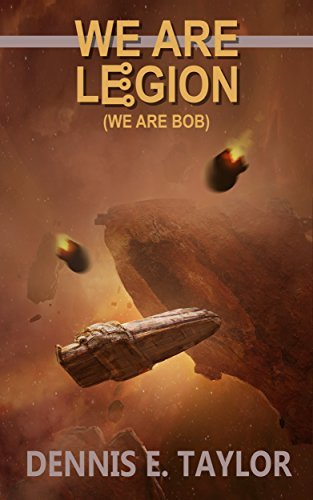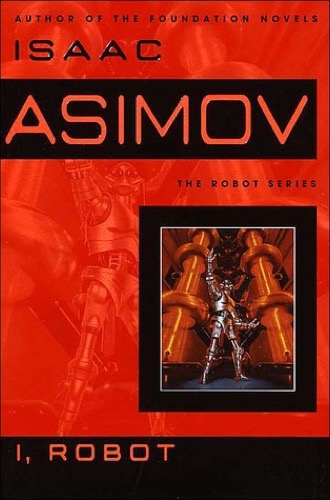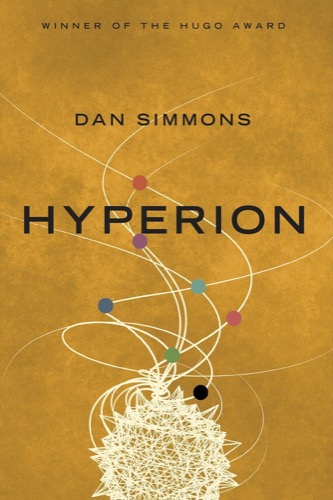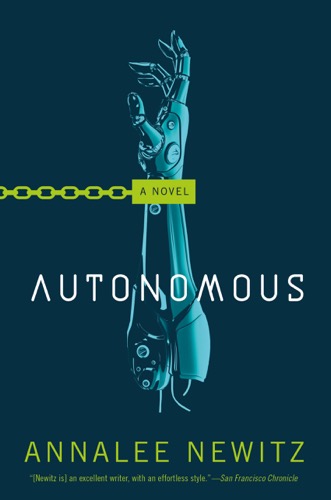The 10 Best Sci-Fi Books About Artificial Intelligence

Sci-fi’s finest authors have overclocked their imaginations to generate worlds where artificial consciousness communed with the human psyche – for better or worse. Some dream that these god-like machines elevated humanity to new eras of enlightenment and understanding. Others caution that these alien intelligences could hijack the world’s nuclear arsenal and blew us all to bits. Let’s hope that the AIs of the future fall into the former category. These are the 10 best sci-fi books about artificial intelligence.
Neuromancer

Hailed as one of the greatest cyberpunk stories ever written, William Gibson’s Neuromancer is the story of a washed up hacker named Case, who is hired for a “one last job” style digital heist by a grizzled ex-soldier. Accompanied by a street warrior with knives in her fingers, Case dives deep into the teeming digital world to pull out a binary prize. As the plot unfolds, Case begins to suspect that the heist has something to do with a rogue AI named Wintermute, who appears to be dogging the hacker’s digital moves at every mouseclick. At the center of the novel is this question: “what could an artificial intelligence possibly want?” While the answer is potentially unfathomable to human minds, Wintermute may soon provide it.
We Are Legion (We Are Bob)

Dennis E. Taylor’s We Are Legion (We Are Bob) is the story of a software engineer who wakes up to discover that his mind has been digitally uploaded to a space probe after his death, and he’s been tasked to chart the stars. While Bob still retains his human anxieties, pop culture interests, and sarcastic sense of humor, he’s gained the distinctly synthetic ability to make copies of his own mind. He creates more Bobs to solve complex engineering problems, and those Bobs can then create even more Bobs to solve tasks of their own. Sometimes those tasks involve joining together into a rival group of Bobs to plot the demise of Bob Prime, the original Bob – and the warring Bobs use their staggering computational powers to wage epic space battles that unfold like a thousand chess matches happening at once. Bob is complicated.
I Have No Mouth and I Must Scream

Harlan Ellison’s I Have No Mouth But I Must Scream may only be a short story, but it packs a literary punch that’s the equivalent of a full length horror novel. Set in a world where a malevolent intelligence called AM wiped out humanity, the god-like machine entertains itself by torturing the last five survivors. The machine has kept its human victims alive throughout centuries, pulling them apart like a flies in the hands of a five year old, then stitching them back together. Why? As AM explains in a now internet famous monologue: hate is the sole reason. This evil computer is essentially going through a synthetic existential crisis, and taking it out on those it holds responsible for burdening it with existence.
I, Robot

Before it was a Will Smith blockbuster about the robot revolution, Isaac Asimov’s I, Robot was a groundbreaking collection of interwoven short stories about artificial consciousness. Each story centers around The Three Laws of Robotics, which were coded into robots programming to prevent them from causing harm. While the Three Laws must have seemed air tight to the engineers that developed them, each of the stories covers the unintended paradoxes and thorny moral questions that these seemingly straightforward rules create. Does causing emotional pain count as hurting a person? Is ignoring humans the best course of action to ensure their safety? What happens when you break one of these laws? I’d rather be stuck with the Trolley Problem than deal with the moral questions these robots must.
A Psalm For The Wild Built

Becky Chamber’s A Psalm For The Wild Built is a solarpunk novel about a humanity’s search for meaning. Set in a world where technological collapse forced humanity to revert to its agrarian roots, a nonbinary acolyte named Dex sets out on a quest to become a “tea monk” – spiritual therapist that dishes out wisdom and oolong. Basically Uncle Iroh. After a disastrous first attempt at the job leaves a client in emotional shambles, Dex ventures out into the wilderness in search of enlightenment. What they find is a robot named Splendid Speckled Mosscap, who is seeking their own answers to the questions of existence. And so begins a spiritual journey between human and machine.
Ancillary Justice

Ann Leckie’s Ancillary Justice is space opera set in the domain of the Radch empire, which uses AI powered spaceships to expand its interstellar territories. These AIs are capable of inhabiting biological human shells called “ancillaries” which they deploy like soldiers in their colonial quest. After an AI known as Breq awakens trapped in a single ancillary the wreckage of a spaceship, it embarks on a quest to take revenge against the its former imperial employers. Ancillary Justice is the story of altered consciousness, a once god-like AI now stuck in a fragile human form, and how such an experience can change even the coldest of synthetic minds.
All Systems Red (The Murderbot Diaries)

Murderbot only wants to do one thing, and no it isn’t what its namesake suggests. The newly self-aware security drone desires nothing more than to binge trashy soap operas, but instead must protect its crew mates from the alien horrors that stalk the faraway planet that they’ve been tasked to explore. All System Red by Martha Wells is a character study of a synthetic mind, one more emotionally complicated than its deadpan demeanor and murderous moniker would imply. Murderbot is reeling from their experience of a mission gone wrong, where an internal malfunction caused a profound disaster that claimed the lives of many. As a result, the robot medicates with media in order to cope. The novel is a mediation on trauma, and how bad experiences can cause even the most logical minds to crack.
Klara and The Sun

Kazuo Ishiguro’s Klara and The Sunis the tender and heartbreaking story of Klara, an Artificial Friend designed to be a child-like companion to lonely kids who have been genetically engineered for academic excellence (yeah, it’s a dystopia). With the wide-eyed optimism of a stuffed animal waiting on a supermarket shelf, Klara observes the natural world outside of the store window, and begins to develop an almost religious connection to the sun. Klara is soon adopted by family with children who has been made ill as a side effect of the engineering, and attempts to provide the best support her little robot heart can muster. AI inspires many emotions in us: wonder, fear, excitement, dread, but this might just be the first time an AI story threatened to make me ugly cry.
Hyperion

Dan Simmons’ Hyperion is a space opera rewrite of Chaucer’s The Canterbury Tales, and one of the most celebrated sci-fi series ever penned. The novel concerns seven pilgrims on a quest to the distant planet of Hyperion, where a god-like entity is said to be able to grant boons to those worthy. One of the seven is a hardboiled detective who was hired by a cyborg to solve a mystery related to its own existence – and pair end up falling head over heels for one another. In order to save her synthetic lover, she needs what the planet Hyperion is fabled to offer. I’m being deliberately vague to avoid spoilers, but it’s one of the wildest romances in all of fiction: Space Detective seeking Digitally Reincarnated Poet.
Autonomous

Autonomous by Annalee Newitz is the story of Jack Chen, a pharmaceutical Robin Hood who dishes out drugs to those done dirty by the cruel health corporations of the far future. On her tail are synthetic security officer Paladin and its handler Eliasz, whom the human-bodied AI is slowly but surely in love with. While Jack wages war against the moral failings of capitalism, Paladin is forced to process its own internal battles. How can it love if love wasn’t a part of its design? How can it receive loved when it was designed to be nothing more than military property? How can it justify its actions morally when it serves a corrupt system? And just what in the 1’s and 0’s is gender and why does it want one?
(Featured Image: Universal Pictures)
Have a tip we should know? [email protected]
